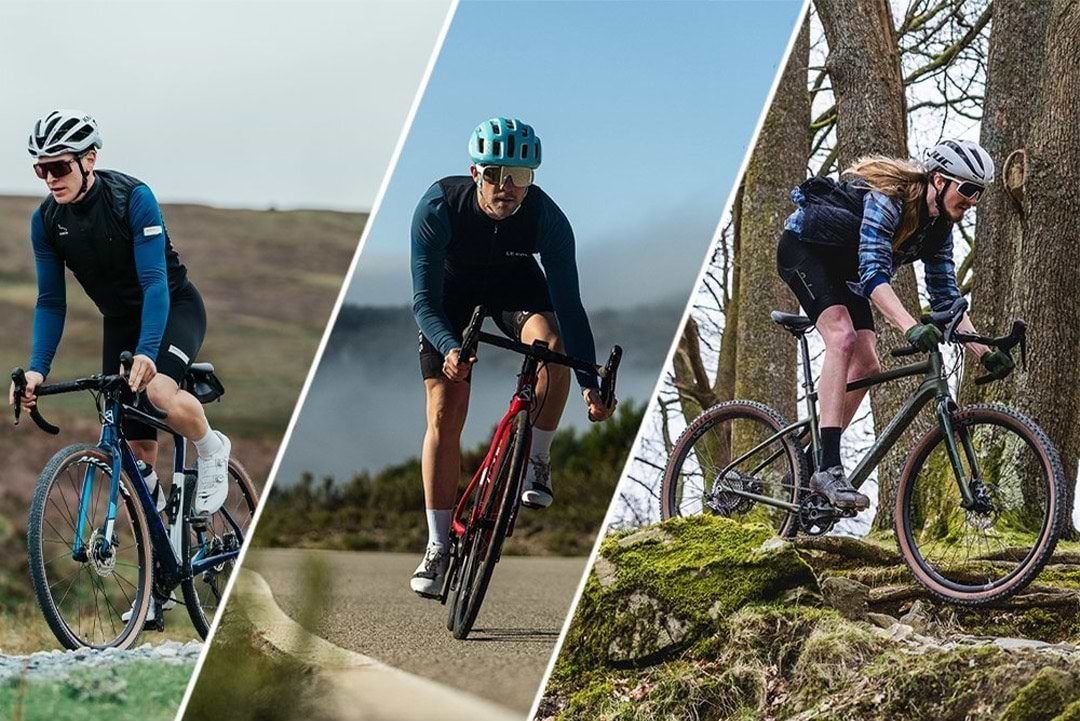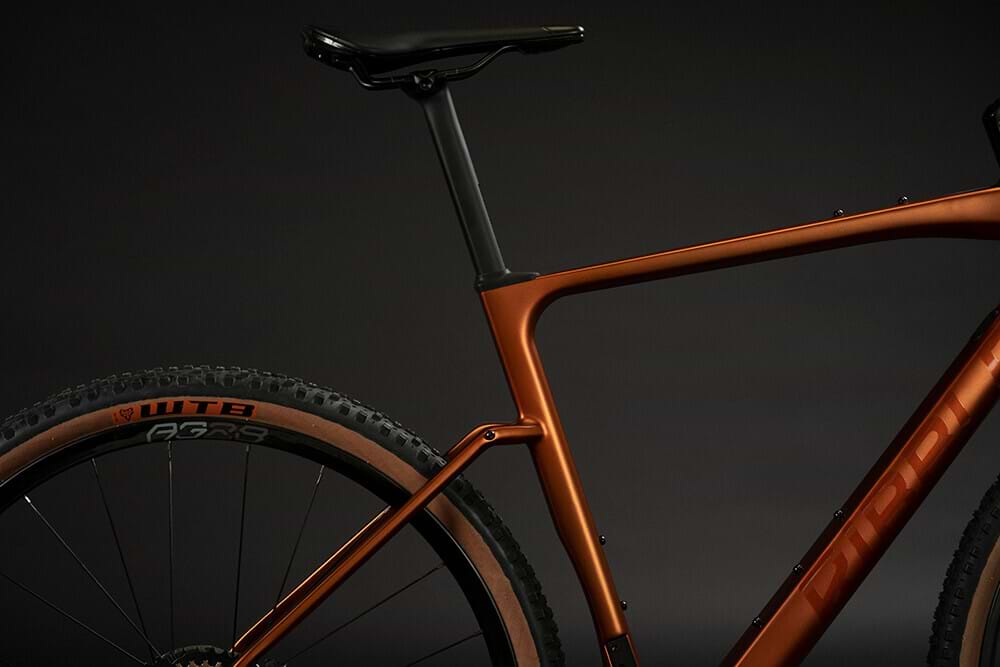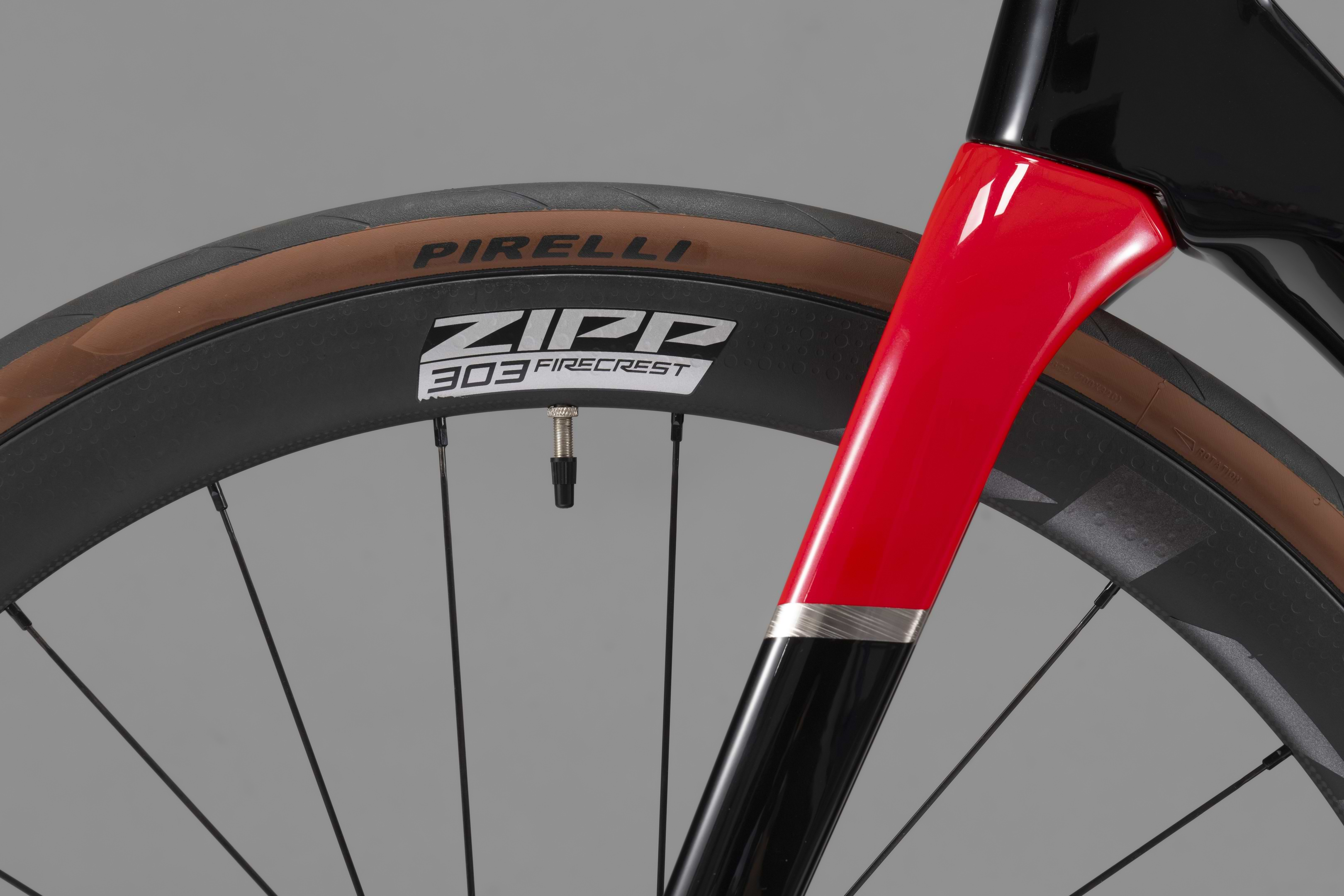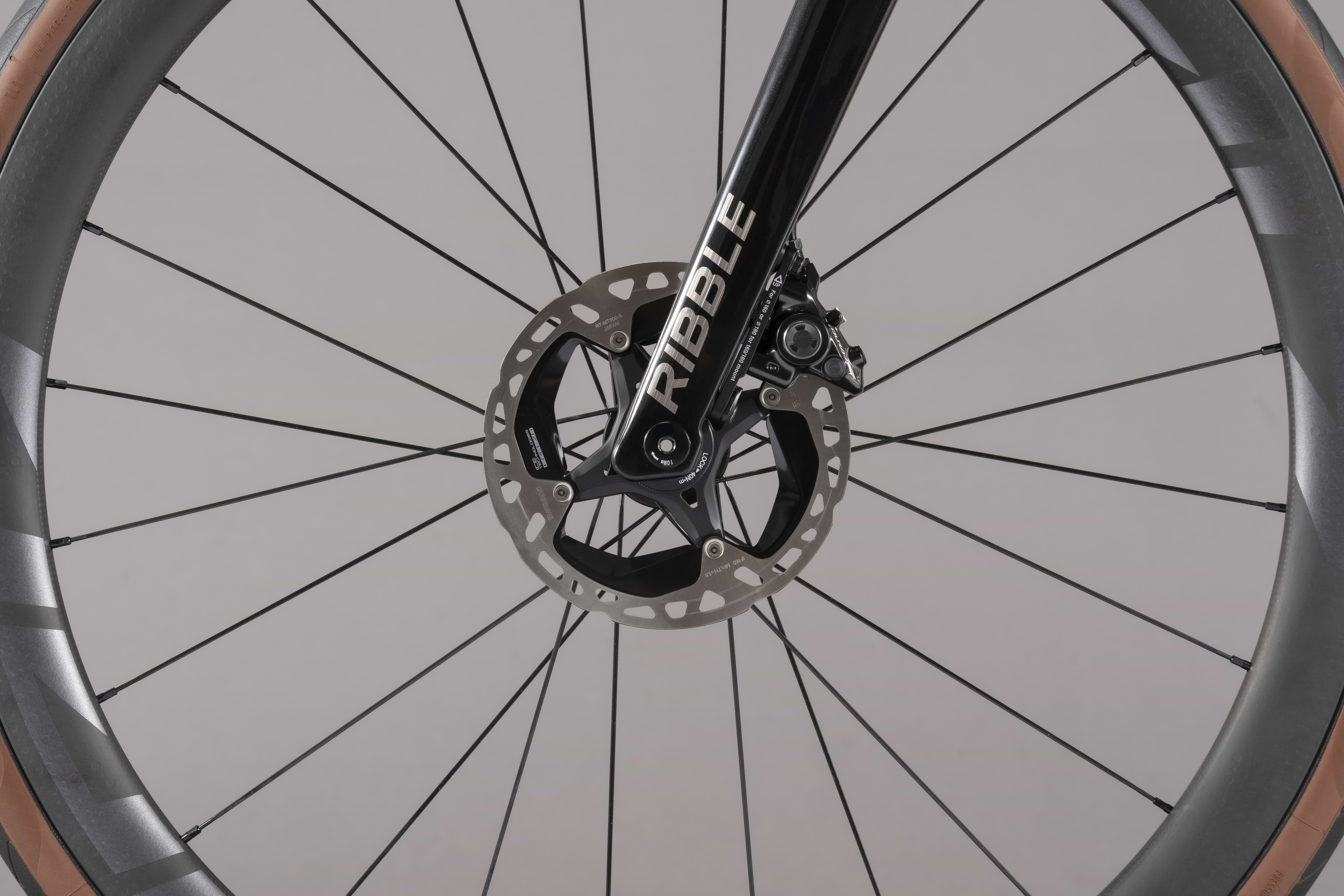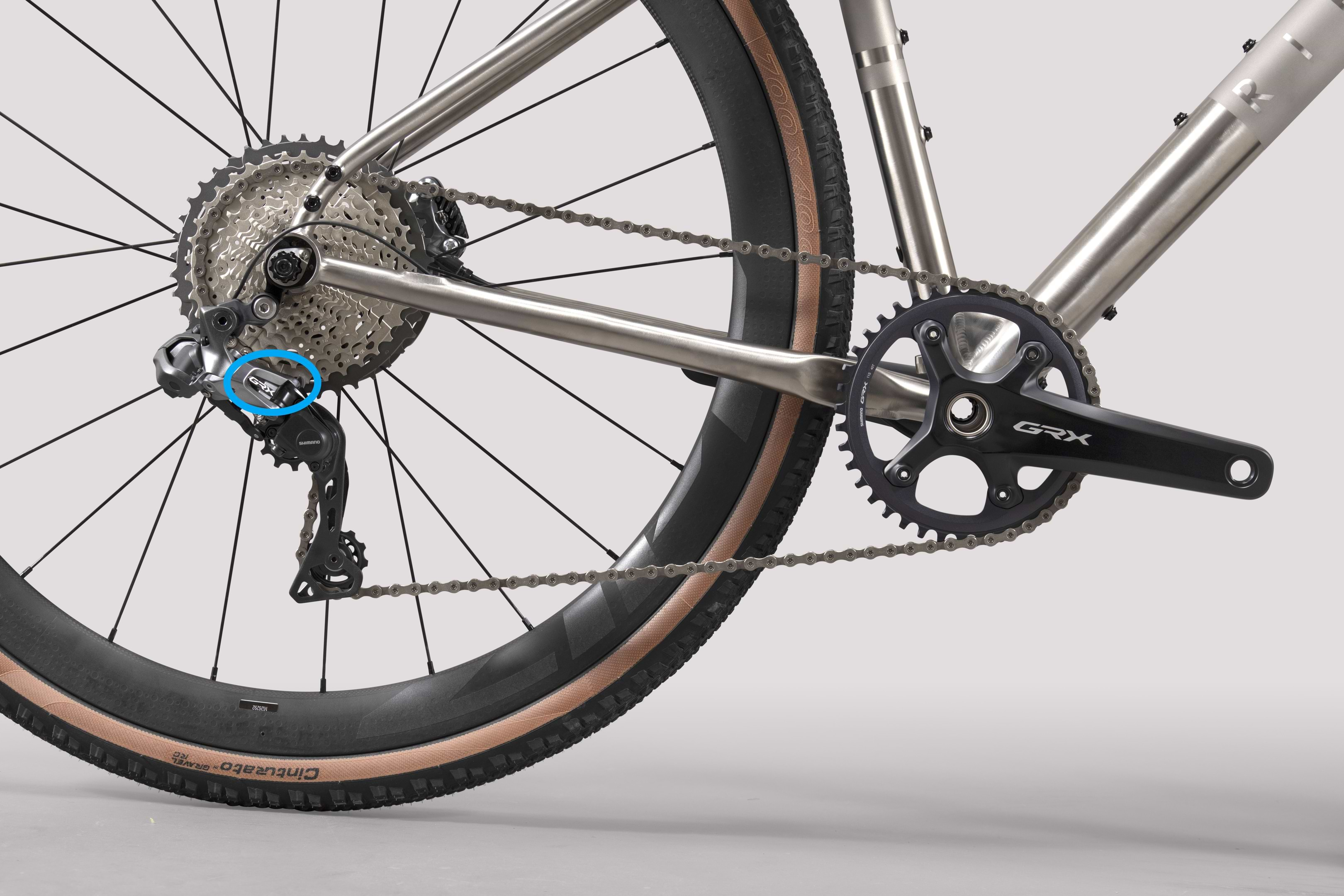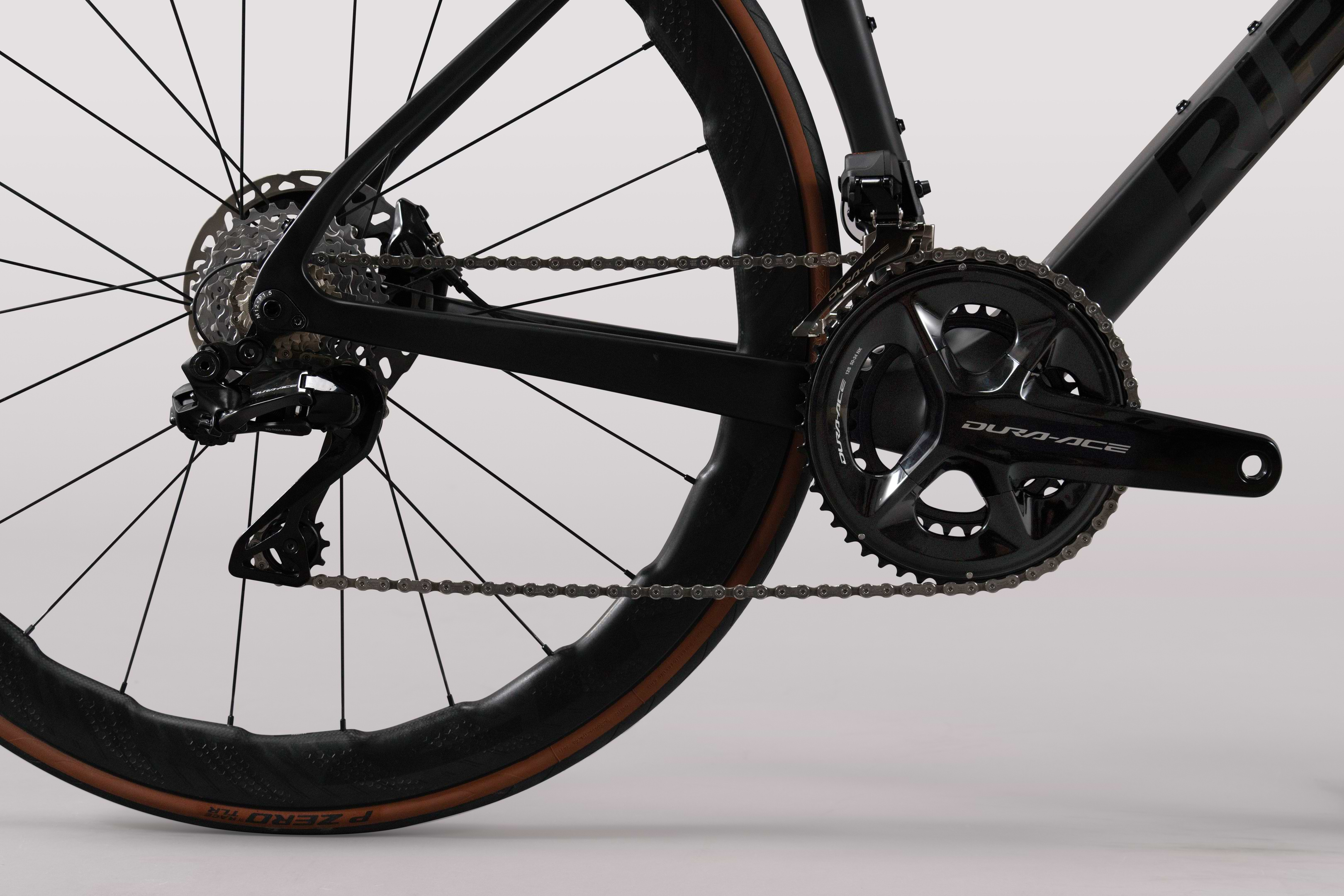Today's drop-bar bikes come in an array of different options, including endurance bikes, all-road bikes, and gravel bikes. But which should you choose and why? We explore the key differences between endurance bikes vs all-road bikes vs gravel bikes and how to select the best one for you.
Endurance Bikes

Above Image: Endurance bikes offer an exhilarating mixture of speed and efficiency, optimised for those long days in the saddle.
Endurance bikes look like ordinary road racing bikes but with one key difference – geometry! A slightly taller front end results in a riding position that’s more upright and relaxed, meaning more ride comfort for those longer days in the saddle. For all-day performance with comfort, it’s got to be ‘endurance’.
Designed for smooth tarmac, endurance bikes are lightweight, stiff and efficient. The built-in stiffness ensures that more of the power generated through the pedals is laid down to the road with little wasted effort. The tube shapes also mimic those of a race bike and are aero-optimised to counter the speed-limiting effects of wind resistance.
All-road Bikes
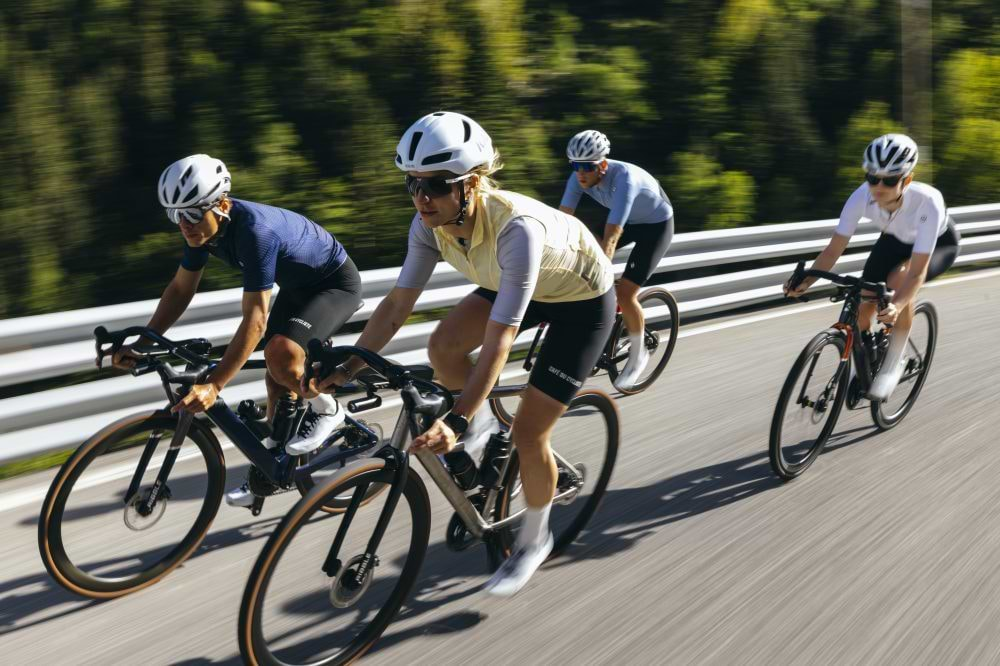
Above Image: The Allroad & CGR family of bikes are versatile and designed to conquer the rough roads, challenging terrain, and mixed conditions.
Visually, there is little to tell an All-road bike apart from its Endurance counterpart. Versatility is the main difference. An All-road bike has a more upright riding posiiton, offering more comfort for long days in the saddle and enhanced stability on rough backroads, hardpack dirt and light gravel. Similarly, like an Endurance bike, the All-road bike is lightweight and stiff, notably in the bottom bracket and headtube areas. This improves the frame's ability to lay down the power more efficiently and provides light and responsive steering control, which is beneficial for blasting along smooth roads and light off-road trails.
This category can be broken down into two distinct compoents, the latest 'Allroad' range and the CGR family of bikes. The former are a derivative of the Ultra SL R race bike, featuring many of the signature aerodynamic innovations as their race focused siblings. Albeit with a more long distance optimised riding position and enhanced 28-38 mm tyre clearance.
The CGR takes this one step further, offering up to 47 mm of clearance to provide extra shock absorption for more ride comfort. Tubeless tyre systems magnify this advantage by maximising traction, rolling resistance, and grip while vastly reducing the risk of punctures.
Gravel Bikes
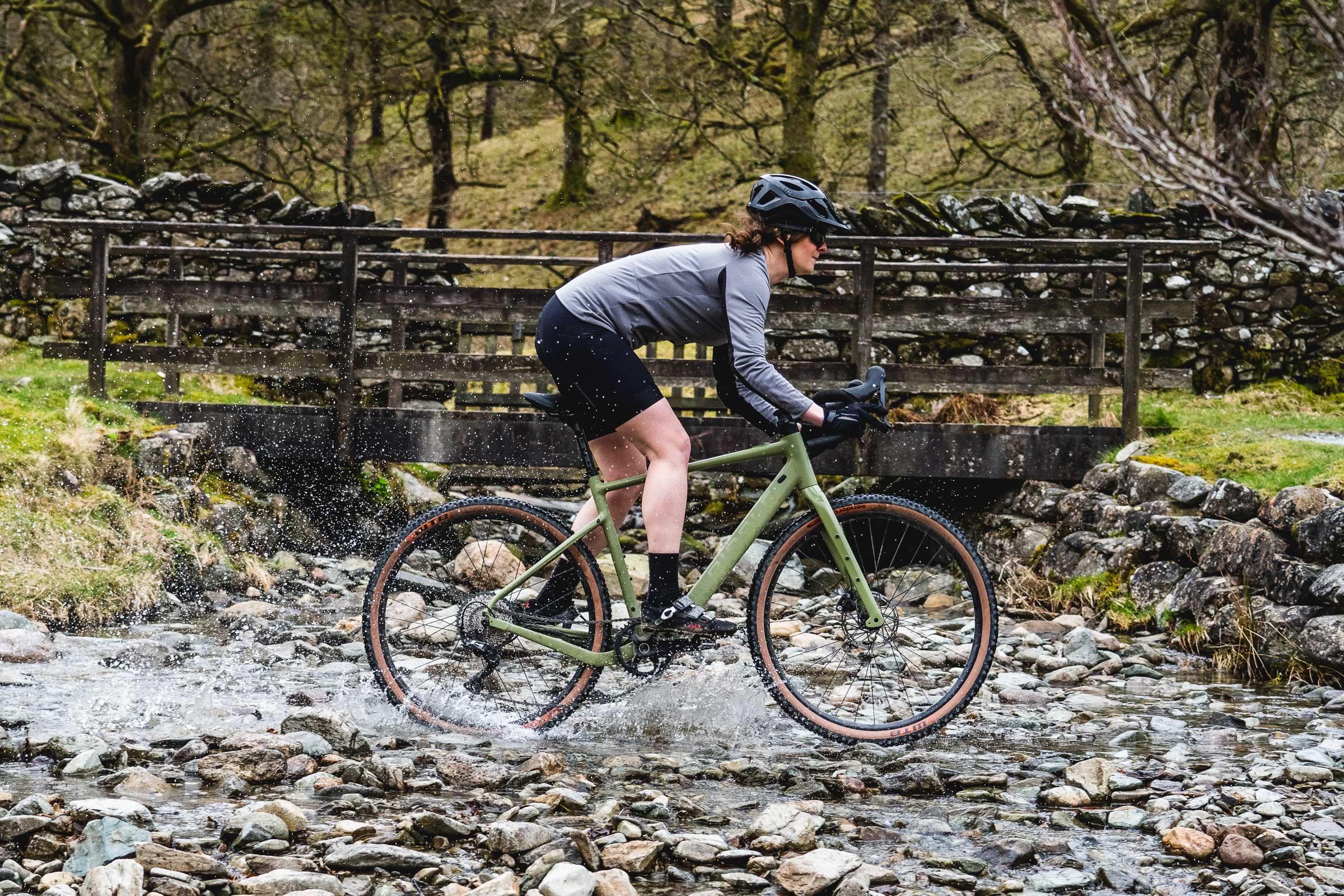
Above Image: Ride faster and smoother while exploring remote locations. Gravel bikes can take you anywhere, leaving no terrain undiscovered.
Gravel bikes essentially upgrade all the best features of an All-road bike that rides effortlessly where the pavement transitions into paved roads. Sporting the most relaxed riding positon of any drop-bar bike, the long and low geometry is straight from a mountain bike.
The advantages to this are twofold: first, it's more comfortable during longer rides. Nobody enjoys suffering towards the end of an epic and thoroughly enjoyable ride. Second, the gravel-optimised geometry provides better weight distribution, placing rider weight over the back wheel, which is more advantageous on tight, twisty and technical terrain.
The Ribble Gravel range includes our most comprehensive selection of luggage mounts, allowing for an impressive cargo capacity. Whether you're embarking on a long bikepacking expedition, enjoying a weekend gravel getaway, or taking a leisurely day trip, these gravel bikes are designed to handle the challenges of carrying cargo over vast distances and over the roughest terrain imaginable.
Summarised - Endurance vs All-road vs Gravel
Tyres
Until the late 20th century, it was believed that narrow-profile tyres rolled faster than wider options. Typically, bikes would be fitted with tyres between 19 and 23 mm wide. As technology and science evolved, wider tyres have proved to be far more effective: wider tyres conform to the road and enlarge the contact patch, leading to reduced vibration from rough surfaces, less rolling-resistance and a faster, smoother ride.
A wider tyre also ‘squats’ lower on the wheel rim, improving aerodynamic efficiency. Ribble's range of endurance road bikes equipped with disc brakes offer clearance for tyres up to 32 mm in width. Compare this with the the 45/47 mm of the All-road or Gravel bike, and the extra tyre clearance is crucial to enhancing comfort and performance when riding off the beaten track.
Wheels
The key difference between road and off-road wheels is in how wide and deep the rims are. It's more advantageous to have a deep section wheel of 40-60 mm on the road where aerodynamics plays a crucial part in maximising performance and efficiency. However, this becomes less of a factor at the speeds that you typically encounter off-road. Wheels in the 25-40 mm depth range are more often found equipped on this type of bike.
The extra inner rim width of 'gravel/all-road' wheels enables large-volume tyres to be fitted, which stand straighter in the rim bed to enhance the tyre feel when cornering. It also allows these tyres to be run at much lower pressures, improving traction, comfort, and grip on the most demanding terrain. Then there's the additional compatibility with tubeless tyre systems and the ability to switch out 700c wheels for off-road optimised 650b versions to tackle even more extreme terrain.
For more information, read our Wheels Guide.
Frame Mounts
The only mounts you will find featured on endurance road bikes are those that allow you to fit a bottle cage to the down tube and seat tube. To enhance their versatility, all-road bikes may also include an extra ‘bottle cage’ mount situated underneath the downtube, plus what looks like one just behind the handlebar stem. However, the former is more often used to store a tool tube and the latter a bolt-on top tube bag. Tool tubes are a great way to stash your essential ride tools, while the bolt-on top tube bag provides easy access to your ride snacks and personal belongings.
Gravel bikes, along with All-road bikes to a lesser extent, are designed to enhance luggage-carrying capabilities. To this end, they come equipped with pannier rack mounts at the rear. In the case of Ribble's Gravel bike range, the forks are also drilled to accommodate 'carryall' mounts. These mounts serve as anchor points for various cages, allowing you to store items such as sleeping bags, ground mats, flasks, and more. This ensures that these bikes provide the extra luggage capacity needed for long journeys, making them suitable for those who want to circumnavigate the globe (if that's your kind of thing).
The Allroad SL R, is the first bike in the Ribble range to utilise the added functionality offered by internal frame storage. Stash your favourite tools with our exclusive RIFFT tool and tube wrap, pack a waterproof jacket or fill it with energy food - whatever you need to carry, the internal storage maximises your carrying options.
Ribble's Gravel range has ample mounts to carry vast amounts of luggage, as clearly evidenced by Lawrence Carpenter's fully loaded Gravel SL during his Moroccan Atlas Mountain odyssey.
Derailleur Clutch
Have you ever hit a pothole or ridden on bumpy terrain and heard your chain contact the frame? This is chain slap, and it is the sole reason for the existence of chainstay protectors. Since time immemorial, 'chain slap' has been an issue in cycling, and as gear ratios have continued to expand, chains have increased in length, further exacerbating the issue.
To combat this, the current generation of 'gravel' groupsets all feature a rear derailleur with a built-in clutch. This clutch is designed to limit the amount of chain slap that can occur and saves your frame from potential damage caused by a bouncing chain. It also offers the added benefit of limiting the chances of the chain bouncing off completely on particularly rough terrain.
Gearing
Endurance bikes almost feature a 2x drivetrain (two chainrings at the front). The chainrings are supplied in standard configurations, typically 50-34, 52-36, and the traditional race ratio of 53-39. The lower the numbers, the easier they are to pedal on the climbs.
The advantage of the 2x system is that it offers a wide spread of gears but with smaller gaps between each gear step. So, changing gears is smoother with barely any interruption to your pedalling rhythm (cadence).
All-road bikes may typically feature 1x or 2x groupsets, with the former being simpler and better at shedding mud when riding off-piste. The perceived disadvantage of the 1x system is that the gaps between individual gear shifts are larger. The steps between gears are wider on 1x systems than their 2x counterpart, resulting in minor disruption to the pedalling cadence. This is less of a problem off-road, but some riders find it to be less efficient on the road.
Gravel bikes are also often specc'd with 1x and 2x systems, though the 1x system is far more likely to be the groupset of choice due to these bikes being more focused on non-tarmac rides.
Choosing the right gears for the terrain could be the difference between soaring up a climb or grinding it out.
For more information read our Ultimate Gearing Guide.
How do you decide between an Endurance Bike, All-Road Bike and Gravel Bike?
Though they aren’t specifically designed for this purpose, the tyre clearance offered by most modern road disc bikes has seen them used on smoother gravel roads. However, being limited to 32 mm tyres makes them a little underequipped for more challenging off-road routes. Similarly, an all-road bike fitted with slick road tyres will prove more than fast enough for rapid road rides. So, with the lines being so blurred, choosing a bike can be a tricky proposition.
If you only ever intend to ride on the tarmac, you should limit your search to the Endurance or All-road bike. However, if exploring off the beaten path is more your thing, the extra tyre clearance and lower gear ratios offered by All-road and Gravel bikes will definitely prove more beneficial.
Breaking this down yet further, it may probably prove beneficial to give some serious thought to what sort of terrain you will realistically expect to tackle on the bike. For instance, if it's a mixture of road and the occasional off-road detour, then an All-road bike would absolutely work best. Conversely, if it's mainly off-road routes and you want the option of being able to carry copious amounts of luggage, a gravel bike is definitely the one to opt for.
- Fast Road = Endurance or Allroad
- Fast Road / Light Off-Road = Allroad
- Rugged Offroad / Road = Gravel
Need more information on All-Road Bikes?
Joel Teiger, a sports physiotherapist and dedicated cyclist, shares six of his favorite yoga stretches to enhance on-bike performance, flexibility, and mobility.
